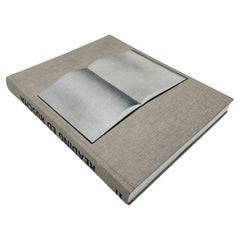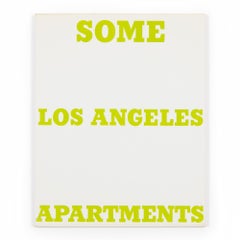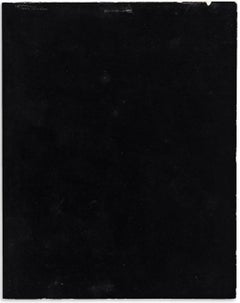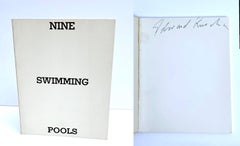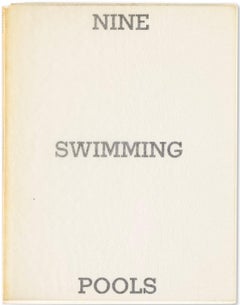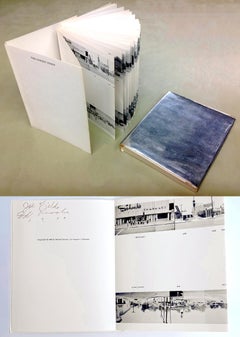Ed Ruscha Book
21st Century and Contemporary American Mid-Century Modern Books
Paper
20th Century Conceptual Abstract Prints
Offset
21st Century and Contemporary Pop Art Figurative Prints
Paper
1960s Pop Art Prints and Multiples
Paper
1970s Pop Art More Art
Ink, Mixed Media, Lithograph, Offset
1960s Pop Art Prints and Multiples
Paper
1960s Pop Art Portrait Prints
Leather, Paper, Ink, Mixed Media, Lithograph, Offset, Silver Gelatin
1960s Pop Art Figurative Prints
Foil
1960s Pop Art Figurative Prints
Lithograph, Offset, Mixed Media
1970s Pop Art Black and White Photography
Paper, Mixed Media, Lithograph, Offset
2010s Contemporary Prints and Multiples
Handmade Paper
1990s Contemporary Portrait Photography
Archival Paper, Polaroid, Color, C Print, Photographic Paper
2010s Contemporary Color Photography
Archival Paper, Photographic Paper, C Print, Color, Polaroid
Early 2000s Contemporary Color Photography
Photographic Paper, C Print, Color, Polaroid
1990s Contemporary Nude Photography
Archival Paper, Photographic Paper, C Print, Color, Polaroid
1990s Contemporary Figurative Photography
Archival Paper, Photographic Paper, C Print, Color, Polaroid
Early 2000s Contemporary Portrait Photography
Archival Paper, Photographic Paper, C Print, Color, Polaroid
1990s Contemporary Portrait Photography
Archival Paper, Photographic Paper, C Print, Color, Polaroid
1990s Contemporary Portrait Photography
Metal
Early 2000s Contemporary Color Photography
Metal
1990s Contemporary Portrait Photography
Metal
1990s Contemporary Portrait Photography
Archival Paper, Photographic Paper, C Print, Color, Polaroid
2010s Contemporary Color Photography
Archival Paper, Photographic Paper, C Print, Color, Polaroid
21st Century and Contemporary Contemporary Landscape Photography
Archival Paper, C Print, Color, Polaroid
21st Century and Contemporary Contemporary Landscape Photography
Archival Paper, C Print, Color, Polaroid, Photographic Film
Early 2000s Contemporary Portrait Photography
Archival Paper, Photographic Paper, C Print, Color, Polaroid
Early 2000s Contemporary Figurative Photography
Photographic Paper, C Print, Color, Polaroid, Archival Paper
1990s Contemporary Color Photography
Archival Paper, Photographic Paper, Color, Archival Pigment, Polaroid
2010s Contemporary Color Photography
Photographic Paper, C Print, Polaroid
1990s Contemporary Portrait Photography
Metal
Early 2000s Contemporary Color Photography
Archival Paper, Photographic Paper, C Print, Polaroid
1990s Contemporary Landscape Photography
Archival Paper, Photographic Paper, C Print, Color, Polaroid
Early 2000s Contemporary Portrait Photography
Archival Paper, Photographic Paper, C Print, Color, Polaroid
Early 2000s Contemporary Portrait Photography
Archival Paper, Photographic Paper, C Print, Color, Polaroid
1990s Contemporary Nude Photography
Archival Paper, Photographic Paper, C Print, Color, Polaroid
1990s Contemporary Nude Photography
Archival Paper, Photographic Paper, C Print, Color, Polaroid
1990s Contemporary Nude Photography
Archival Paper, Photographic Paper, C Print, Color, Polaroid
1990s Contemporary Nude Photography
Archival Paper, Photographic Paper, C Print, Color, Polaroid
1990s Contemporary Nude Photography
Archival Paper, Photographic Paper, C Print, Color, Polaroid
1990s Contemporary Nude Photography
Archival Paper, Photographic Paper, C Print, Color, Polaroid
1990s Contemporary Nude Photography
Archival Paper, Photographic Paper, C Print, Color, Polaroid
1990s Contemporary Nude Photography
Archival Paper, Photographic Paper, C Print, Color, Polaroid
1990s Contemporary Nude Photography
Archival Paper, Photographic Paper, C Print, Color, Polaroid
1990s Contemporary Nude Photography
Archival Paper, Photographic Paper, C Print, Color, Polaroid
1990s Contemporary Nude Photography
Archival Paper, Photographic Paper, C Print, Color, Polaroid
1990s Contemporary Nude Photography
Archival Paper, Photographic Paper, C Print, Color, Polaroid
1990s Contemporary Nude Photography
Archival Paper, Photographic Paper, C Print, Color, Polaroid
1990s Contemporary Nude Photography
Archival Paper, Photographic Paper, C Print, Color, Polaroid
1990s Contemporary Nude Photography
Archival Paper, Photographic Paper, C Print, Color, Polaroid
1990s Contemporary Nude Photography
Archival Paper, Photographic Paper, C Print, Color, Polaroid
1990s Contemporary Nude Photography
Archival Paper, Photographic Paper, C Print, Color, Polaroid
1990s Contemporary Nude Photography
Archival Paper, Photographic Paper, C Print, Color, Polaroid
1990s Contemporary Nude Photography
Archival Paper, Photographic Paper, C Print, Color, Polaroid
1990s Contemporary Nude Photography
Archival Paper, Photographic Paper, C Print, Color, Polaroid
1990s Contemporary Nude Photography
Archival Paper, Photographic Paper, C Print, Color, Polaroid
1990s Contemporary Color Photography
Photographic Paper, C Print, Color, Polaroid, Archival Paper
1990s Contemporary Figurative Photography
Archival Paper, Photographic Paper, C Print, Color, Polaroid
Early 2000s Contemporary Color Photography
Archival Paper, Photographic Paper, C Print, Color, Polaroid
- 1
Ed Ruscha Book For Sale on 1stDibs
How Much is a Ed Ruscha Book?
Read More
11 of Annie Leibovitz’s Most Talked-About Photographs
See why the famed photographer's celebrity portraits have graced magazine covers and become headline grabbers in their own right for five decades and counting.
Photographer to Know: David Bailey
British portraitist David Bailey gets up close to his celebrity subjects.
Photographer to Know: Berenice Abbott
One of the 20th century's most important female photographers is finally being recognized as a daring and seminal artist.
Proving It’s More Than Mansions, Palms and Beaches, a Storied Florida Playground Is Getting Serious about Art
The newly redesigned Norton Museum and other impressive exhibition spaces around Palm Beach are drawing art aficionados to the tony enclave year-round.
Irby Pace Explodes Colorful Smoke Bombs across Texas
The artist, known for his surreal smoke-cloud photography, discusses the process and future direction of his creative pursuit.
